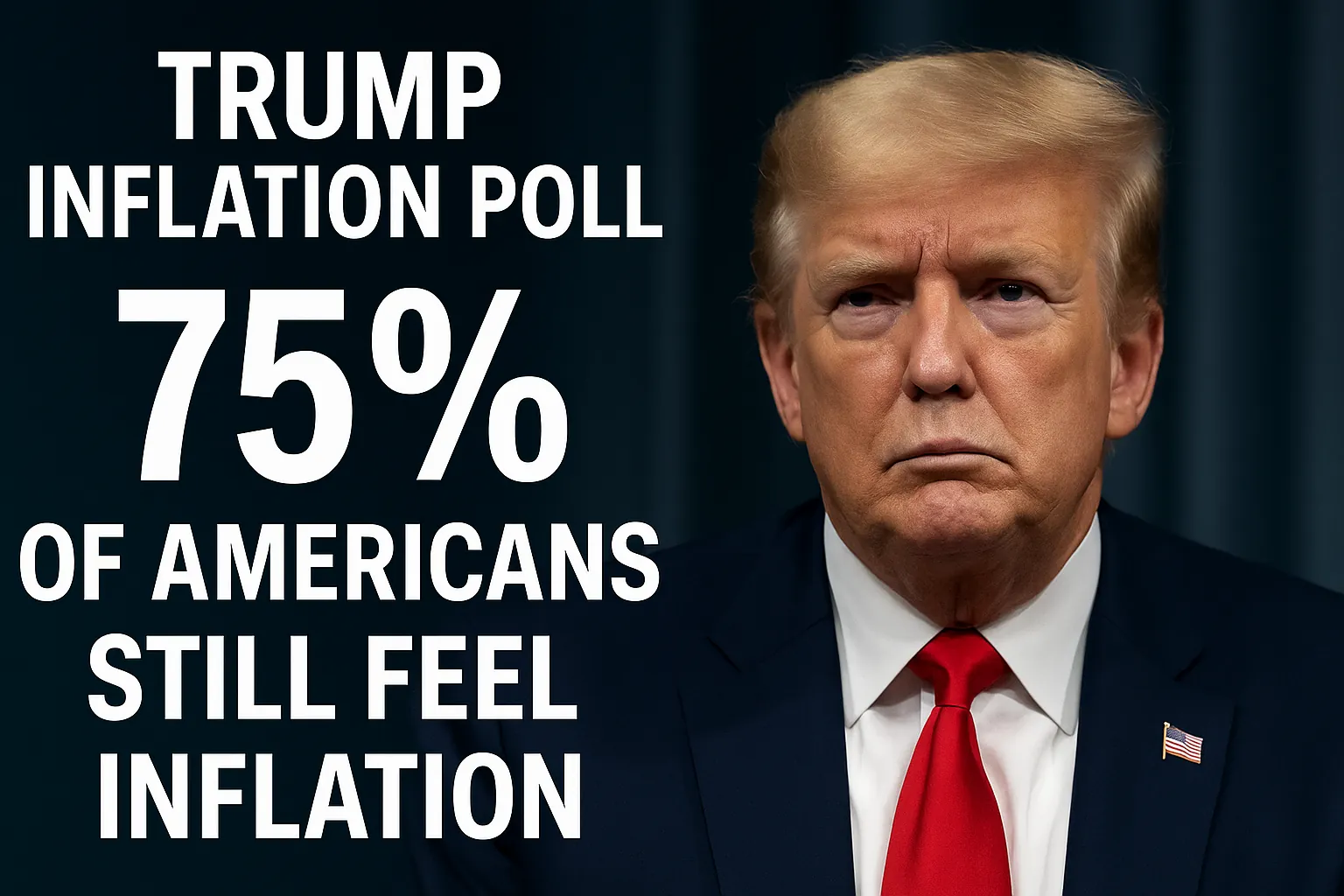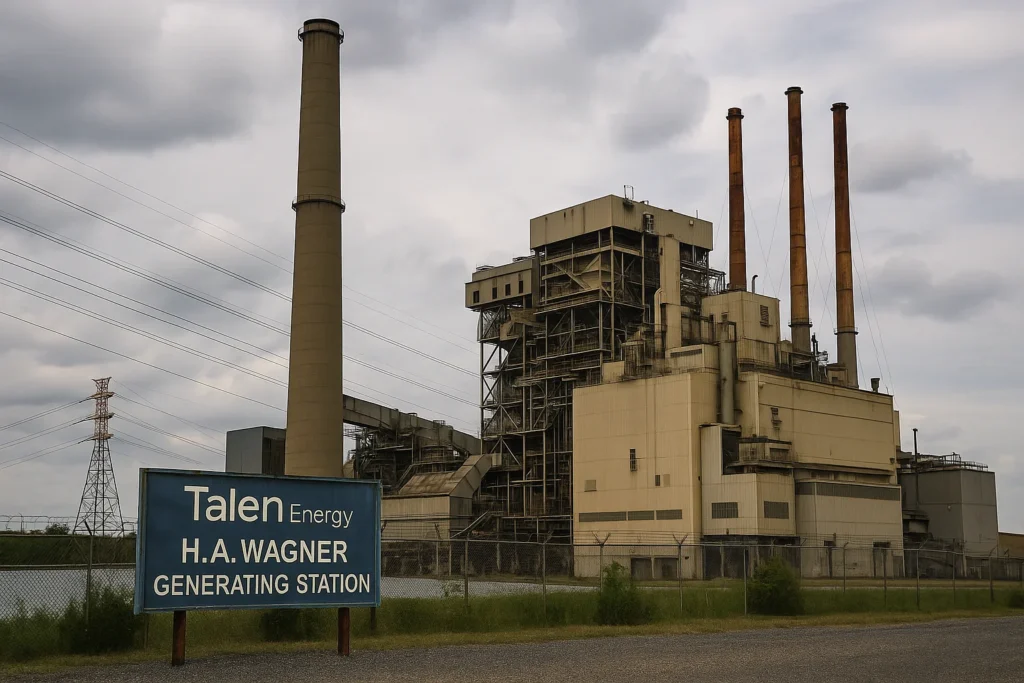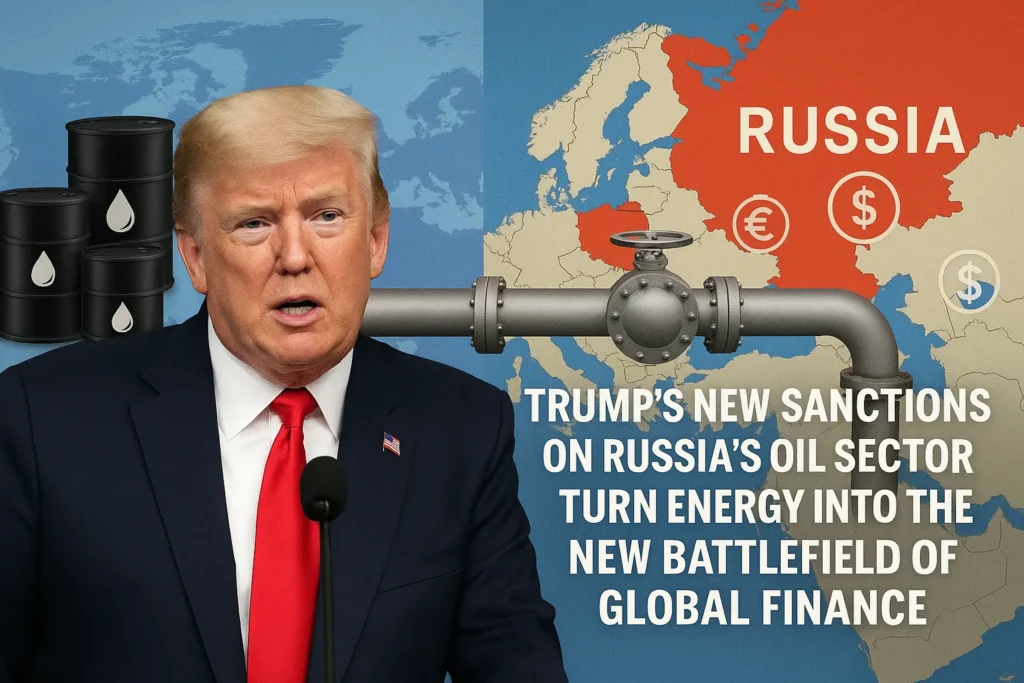The latest Trump inflation poll has revealed a brutal contradiction between the White House narrative and public sentiment. While President Trump declares that “inflation is over,” three out of four Americans disagree. Seventy-five percent report that prices have continued to rise over the past year, and more than half — 53% — believe the economy is actually deteriorating.
The results expose a widening credibility gap between government rhetoric and everyday reality. From food and fuel to rent and healthcare, costs remain painfully high for millions, even as official inflation metrics show modest cooling. For an administration built on “America First” economic bravado, this disconnect is politically explosive.
Context: The Narrative of a “Fixed” Economy
For months, Trump has framed inflation as a solved problem — a victory of his economic management over “Biden’s chaos.” In rallies and social media posts, he’s insisted that prices are stabilizing and that America is “back on track.” His campaign-style messaging taps into nostalgia for the pre-pandemic boom years when job growth and stock market highs fueled confidence.
Yet the data tells another story. The Consumer Price Index remains above 3.5%, and grocery prices are up nearly 20% compared to 2020. Even everyday essentials — eggs, rent, utilities — have climbed faster than wages.
A recent Guardian–Ipsos poll highlights that inflation now tops all political concerns, cutting across party lines:
- 31% of Republicans cite it as their primary worry.
- 33% of independents agree.
- 29% of Democrats say the same.
The bipartisan anxiety is rare — and dangerous — for a populist president who built his brand on economic control.
Oppositional Argument: The Illusion of Economic Victory
Trump’s “inflation is over” message isn’t optimism — it’s denial. The poll reflects what ordinary Americans already know: official numbers are detached from lived experience.
While Trump’s aides point to moderating inflation reports, people still pay double for groceries compared to 2019. Gas prices remain volatile, rents are unrelenting, and healthcare deductibles keep ballooning. The illusion of stability hides structural weaknesses — tariff-induced price pressures, supply bottlenecks, and an overreliance on cheap imports from countries the administration simultaneously antagonizes.
Economists note that Trump’s aggressive tariff policy, particularly against China and Mexico, has raised input costs for U.S. manufacturers. These costs cascade down to consumers, who now face the very inflationary pressure the president claims to have conquered.
Moreover, Trump’s proposal to eliminate the payroll tax for Social Security — pitched as relief — could balloon the deficit by over $1 trillion in a decade. Cutting a revenue stream while increasing spending on military and domestic subsidies may fuel yet another inflation cycle.
Analytical Breakdown: The Roots of Economic Pessimism
Behind the poll’s numbers lies a broader phenomenon — the erosion of economic trust. Americans don’t just doubt official inflation reports; they doubt the system itself.
Three forces drive this disillusionment:
- Tariff Shock: Trump’s trade wars, particularly with China, have quietly raised production and shipping costs. The National Retail Federation reports import costs up by 14% since tariffs were reinstated. These increases trickle directly into retail prices.
- Housing Crunch: Mortgage rates hovering around 7% have frozen homebuyers out of the market. Renters, especially in cities like Phoenix and Tampa, now pay 35% more than before the pandemic.
- Corporate Pricing Power: Despite slowing inflation, corporations continue “price anchoring” — maintaining elevated prices under the guise of inflation recovery. The Federal Reserve has repeatedly warned of “sticky pricing” driven by corporate profit margins.
In short, inflation hasn’t vanished — it’s mutated. And for working families, that mutation feels permanent.
Human Perspective: Life Under Permanent Price Pressure
Ask anyone outside Washington, and the story is the same: everything still costs more.
In rural Ohio, retirees on fixed incomes say their grocery bills have doubled since 2021. In Los Angeles, teachers are working second jobs to cover rent. A single mother in Houston told The Guardian that her electricity bill “used to be $130 — now it’s $230, and that’s with cutting back on air conditioning.”
These aren’t abstract trends — they are the texture of daily struggle. When the president insists inflation is “over,” people hear indifference. That disconnect feeds cynicism, not confidence.
Meanwhile, partisan divides deepen. Democrats push for price-gouging legislation, earning 45% public support, while Trump’s 43% backing for eliminating the Social Security tax exposes competing visions of “relief.” Both parties speak of economic rescue, but neither seems able to deliver stability.
Counterarguments: Trump’s Defenders Double Down
Trump loyalists argue that public perception lags behind policy impact. They claim that inflation is technically falling, and that voters simply need time to “feel the progress.”
The administration highlights falling energy costs and moderate job growth as proof that the economic engine still runs strong. In campaign rhetoric, Trump portrays inflation concerns as “media panic” and insists that tariffs will “protect America’s independence” from Chinese goods.
Yet this argument collapses under scrutiny. Energy prices are volatile precisely because of tariff-induced instability. Job growth is slower than expected, and manufacturing output has declined for three straight quarters. For most Americans, “technical” inflation relief is irrelevant if daily expenses still break the budget.
Conclusion: Economic Reality Always Wins
Polls like this don’t just measure sentiment — they measure political vulnerability. Trump’s insistence that inflation is “over” may backfire, reinforcing the perception that he’s out of touch with middle-class pain.
If 75% of Americans believe prices are rising, the message from the electorate is unmistakable: optimism can’t replace affordability.
The deeper danger is credibility erosion. Once leaders lose economic trust, it’s nearly impossible to regain. If Trump’s base begins to feel betrayed by economic hardship, even his populist messaging may fracture. Inflation, once dismissed as “Biden’s problem,” is now Trump’s burden — and it’s far from over.
Ultimately, the Trump inflation poll reveals more than discontent. It exposes the paradox of populism in power: a movement that promised to fight elites now finds itself defending an economic narrative detached from ordinary life.
If inflation is truly “over,” Americans are still waiting for proof at the checkout counter.
External Links
- The Guardian – Inflation Poll Shows Economic Pessimism
- Federal Reserve – Price Stability and Corporate Profit Margins Report
26 views






